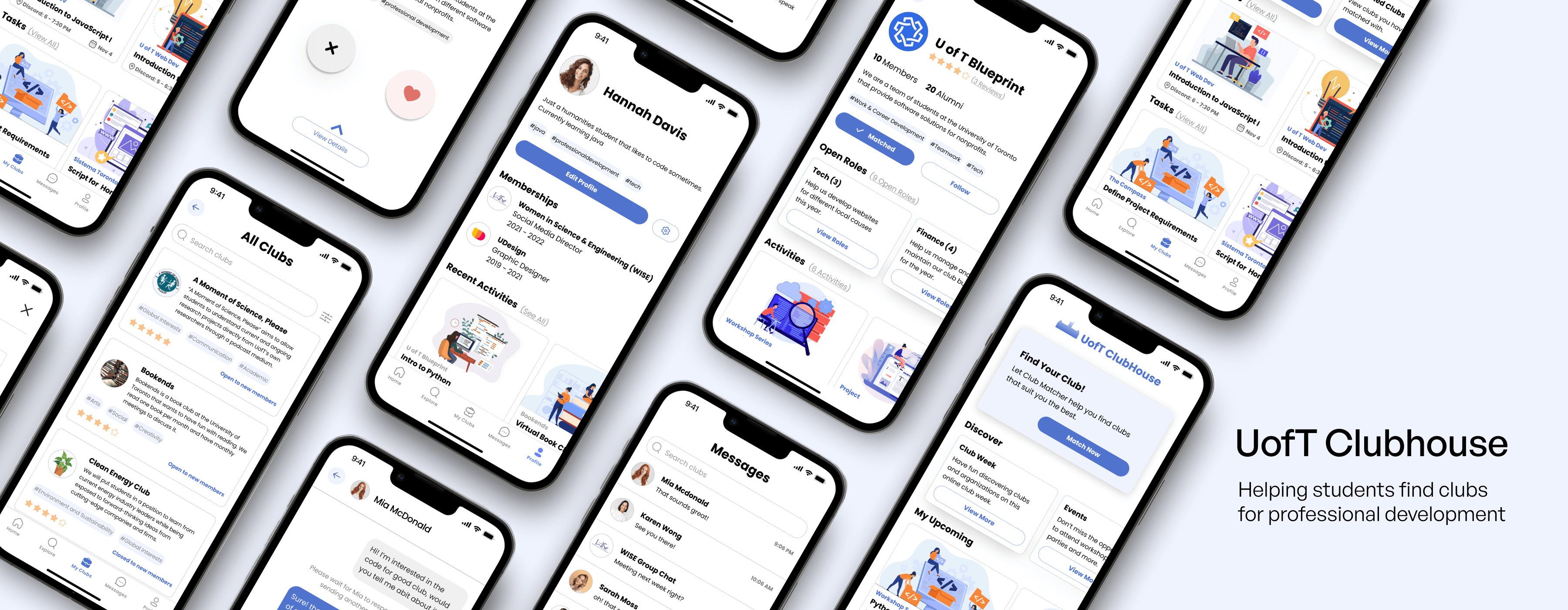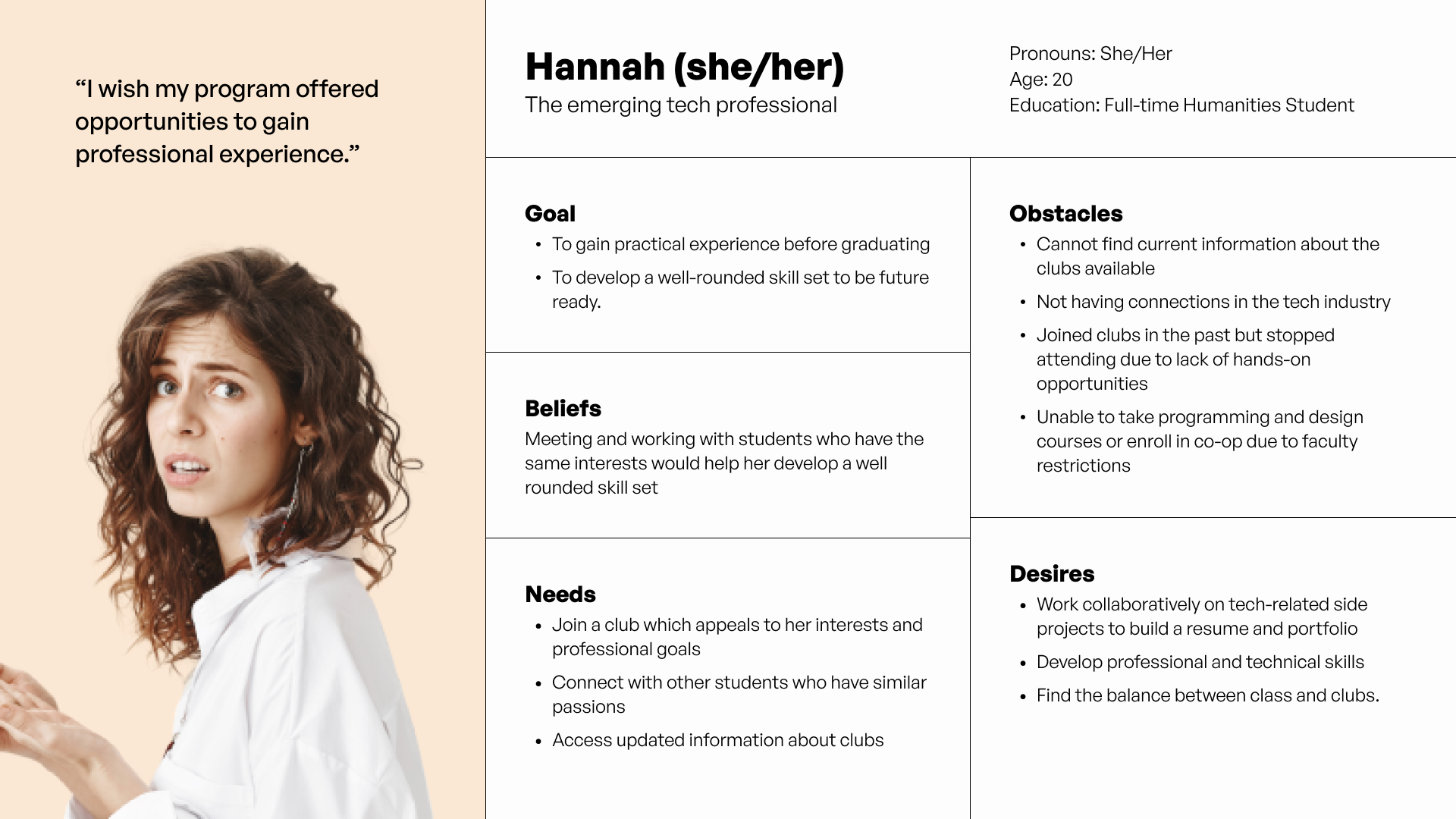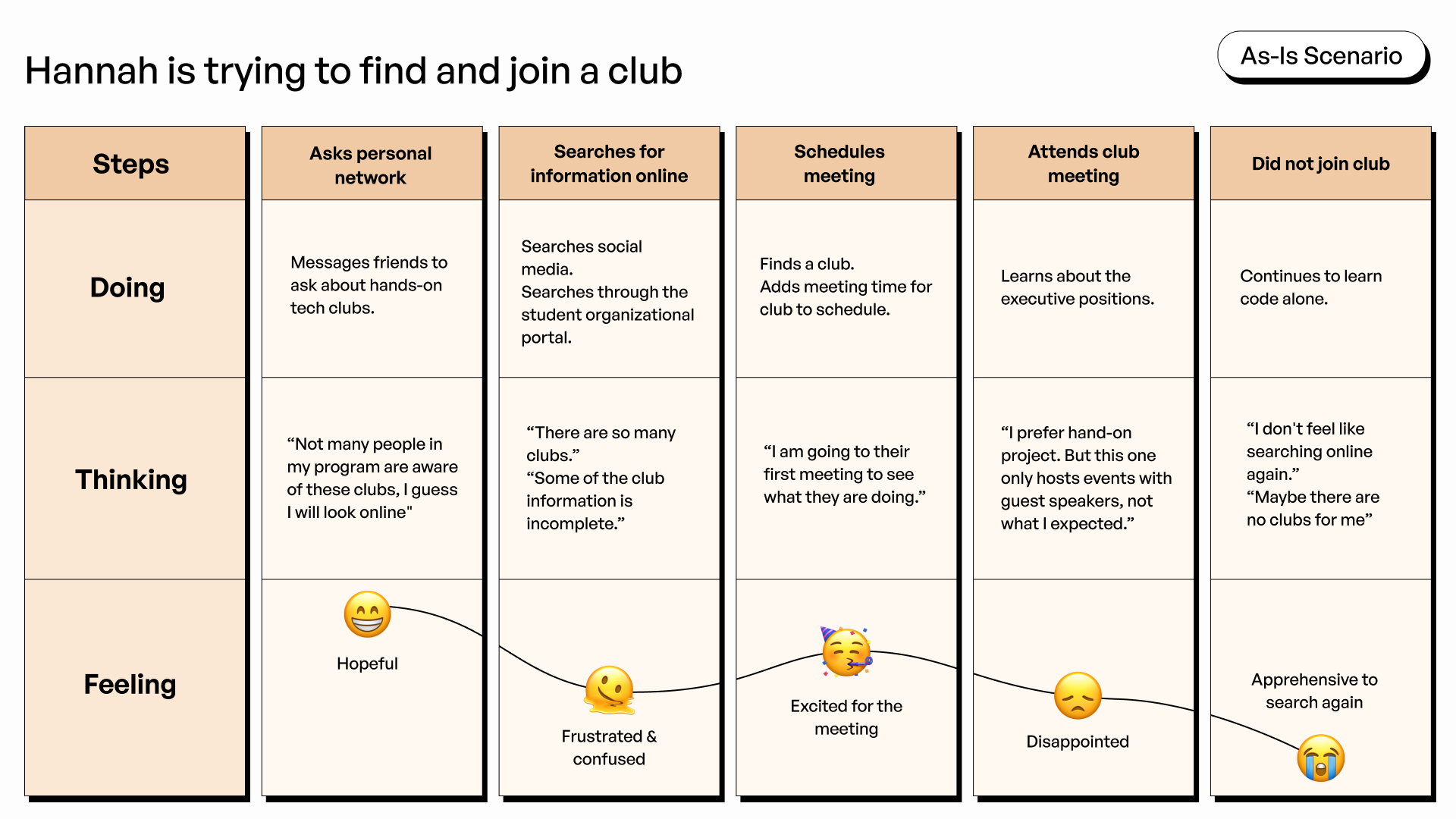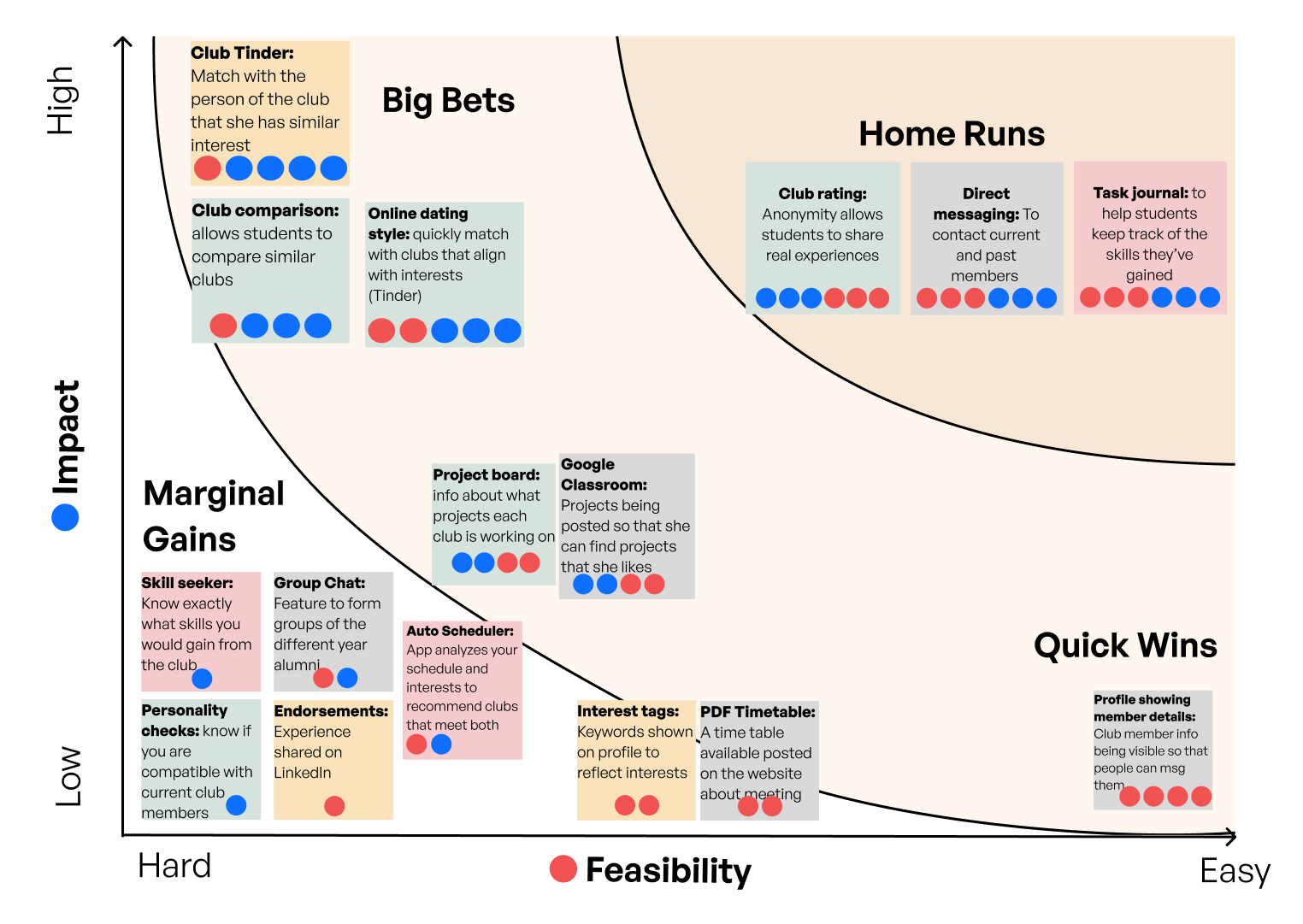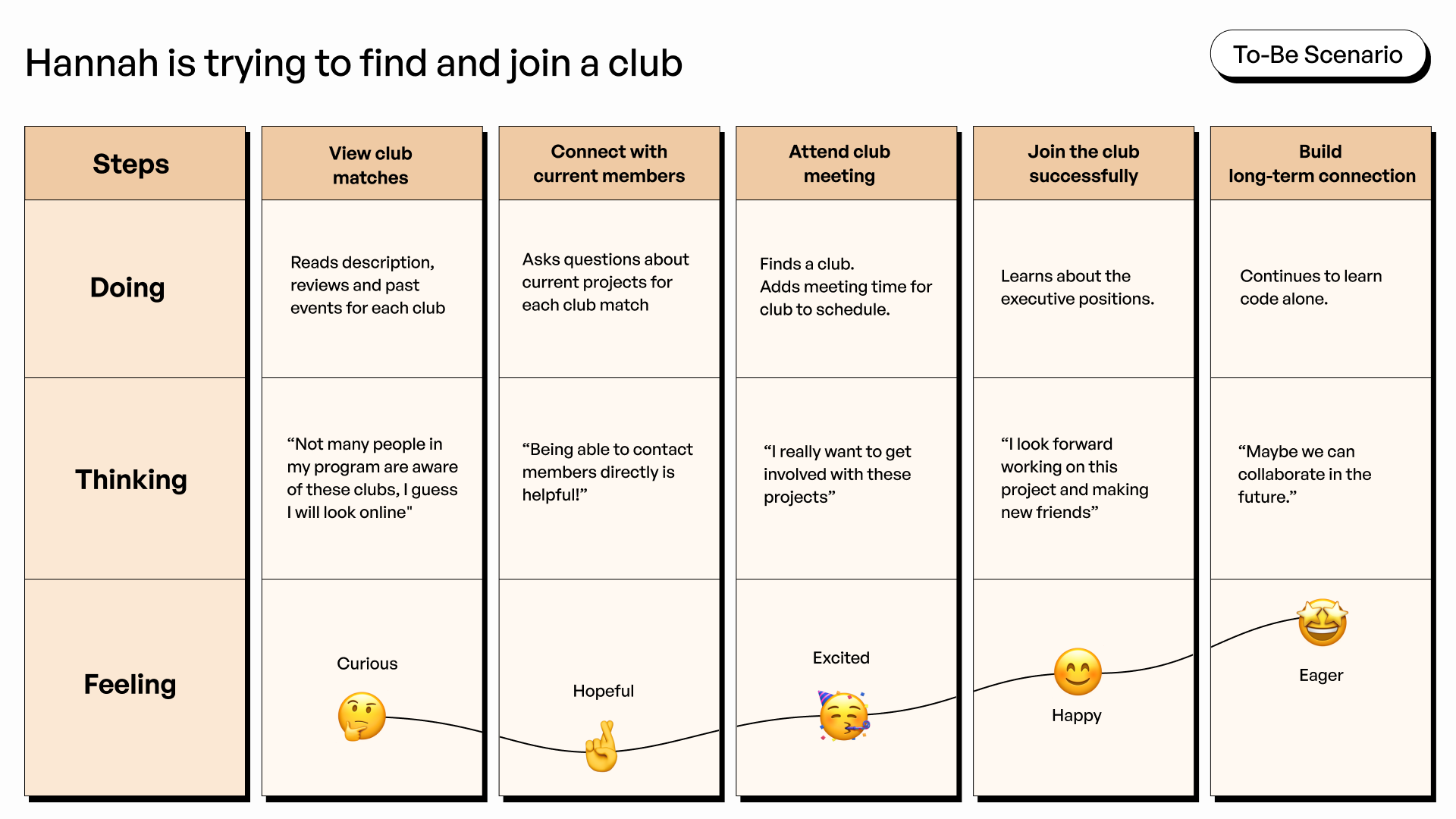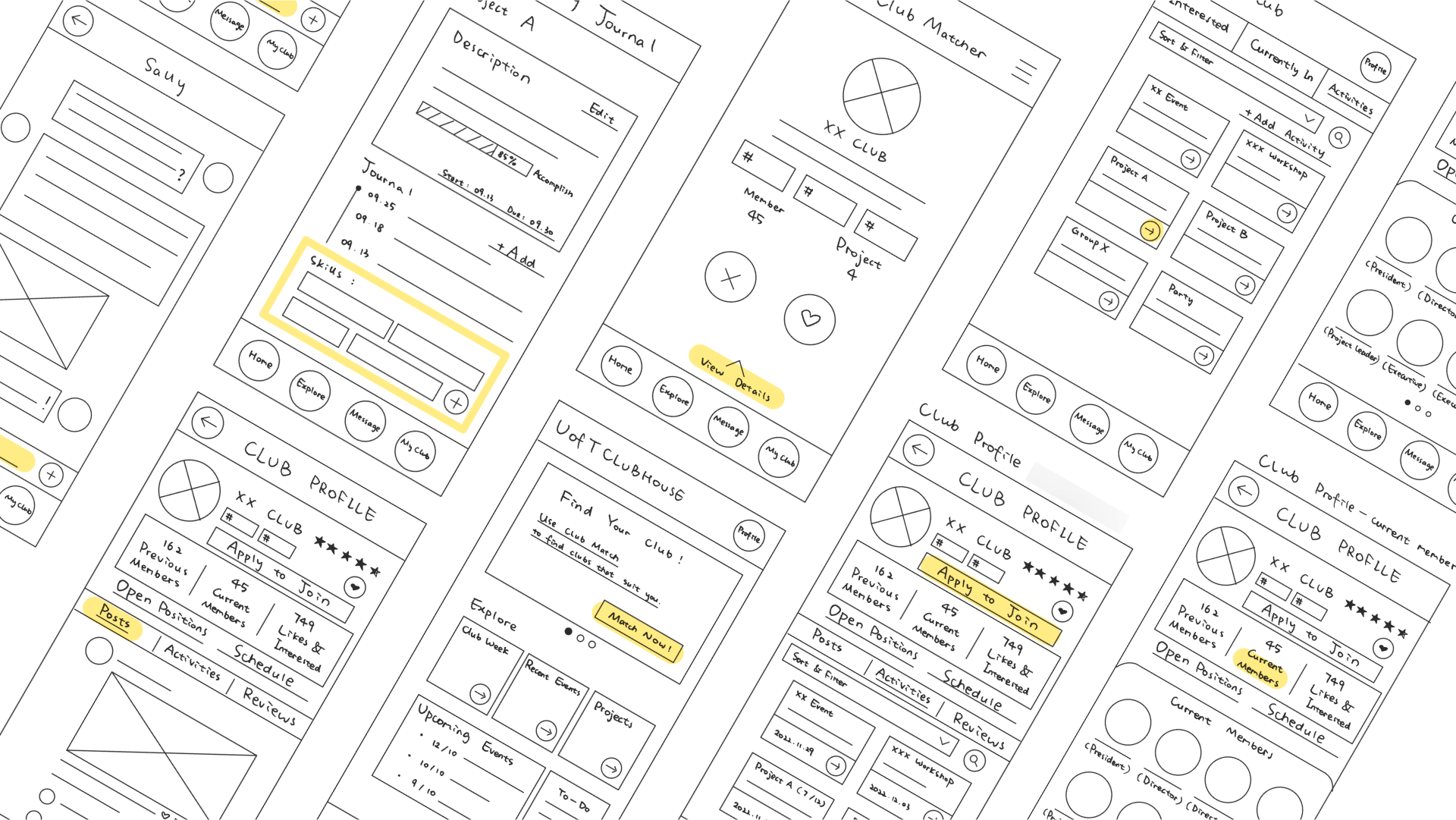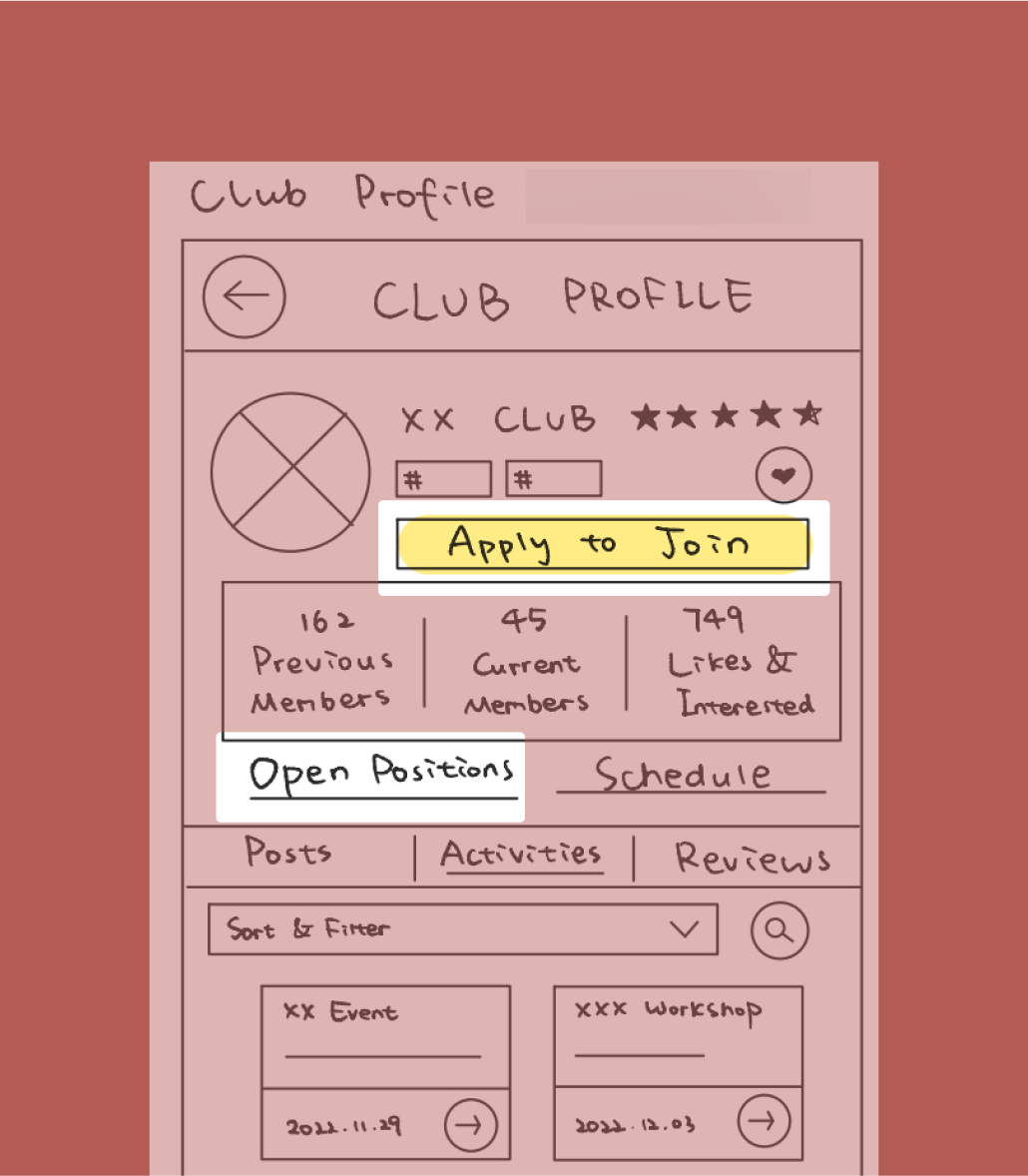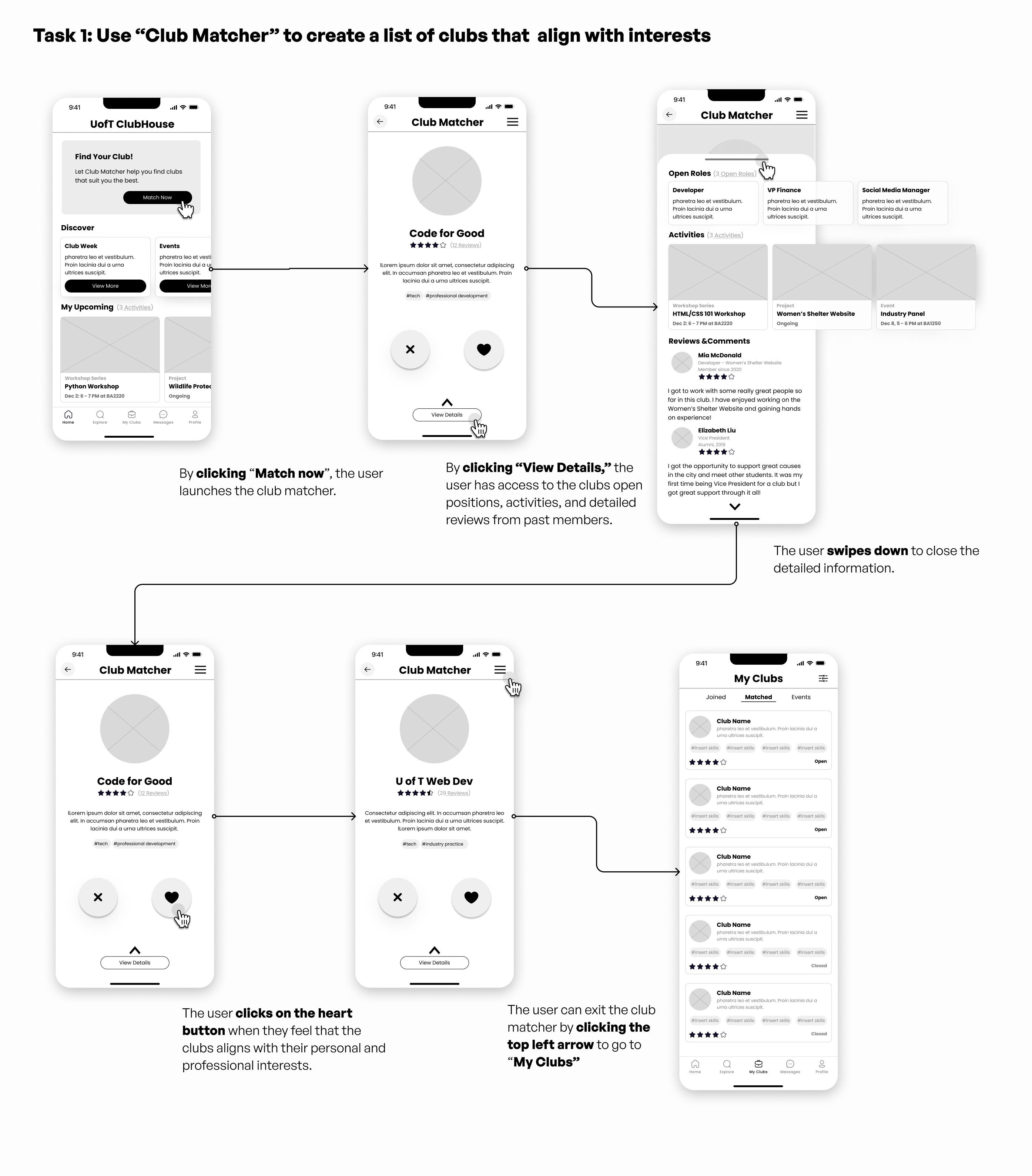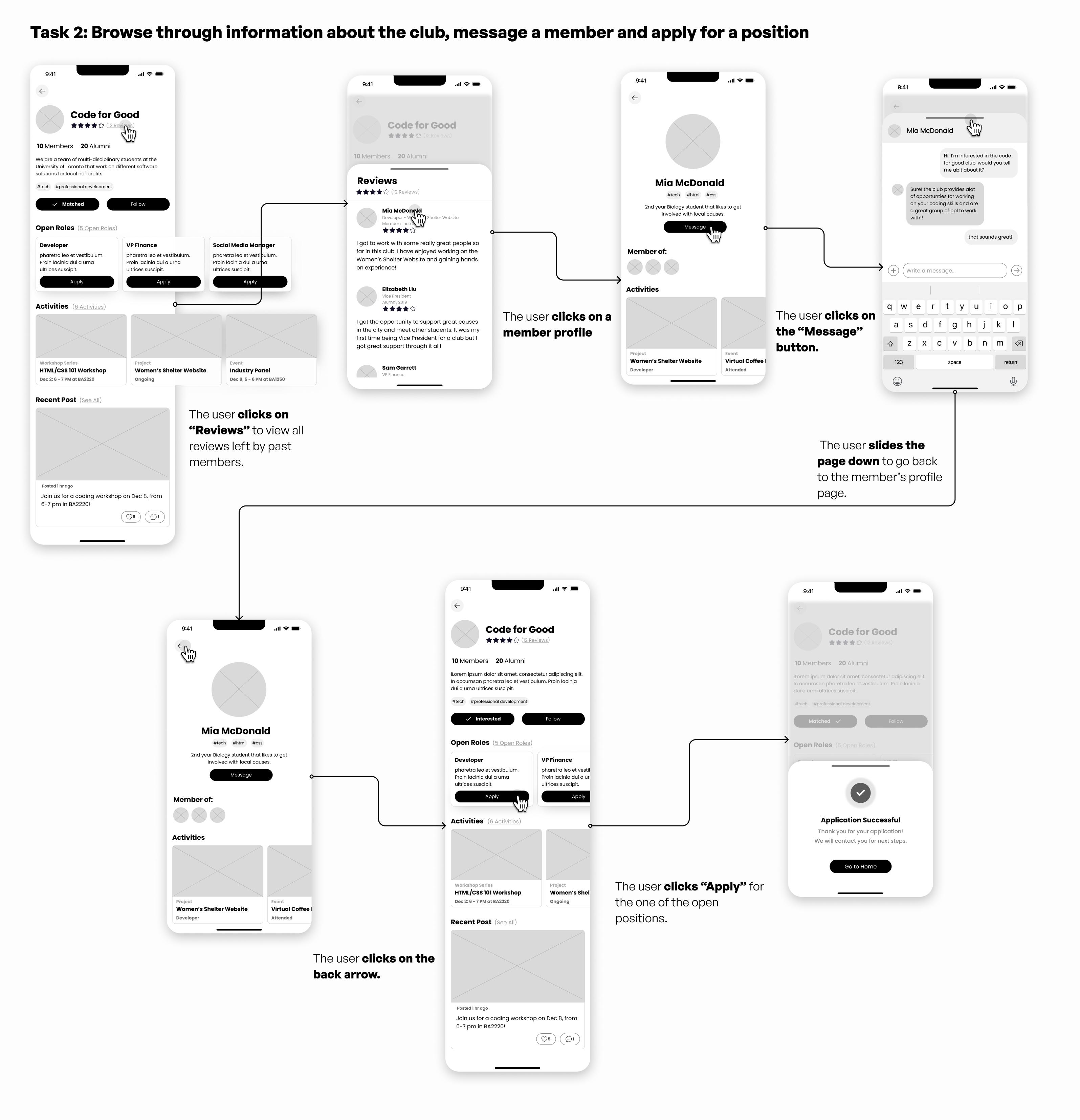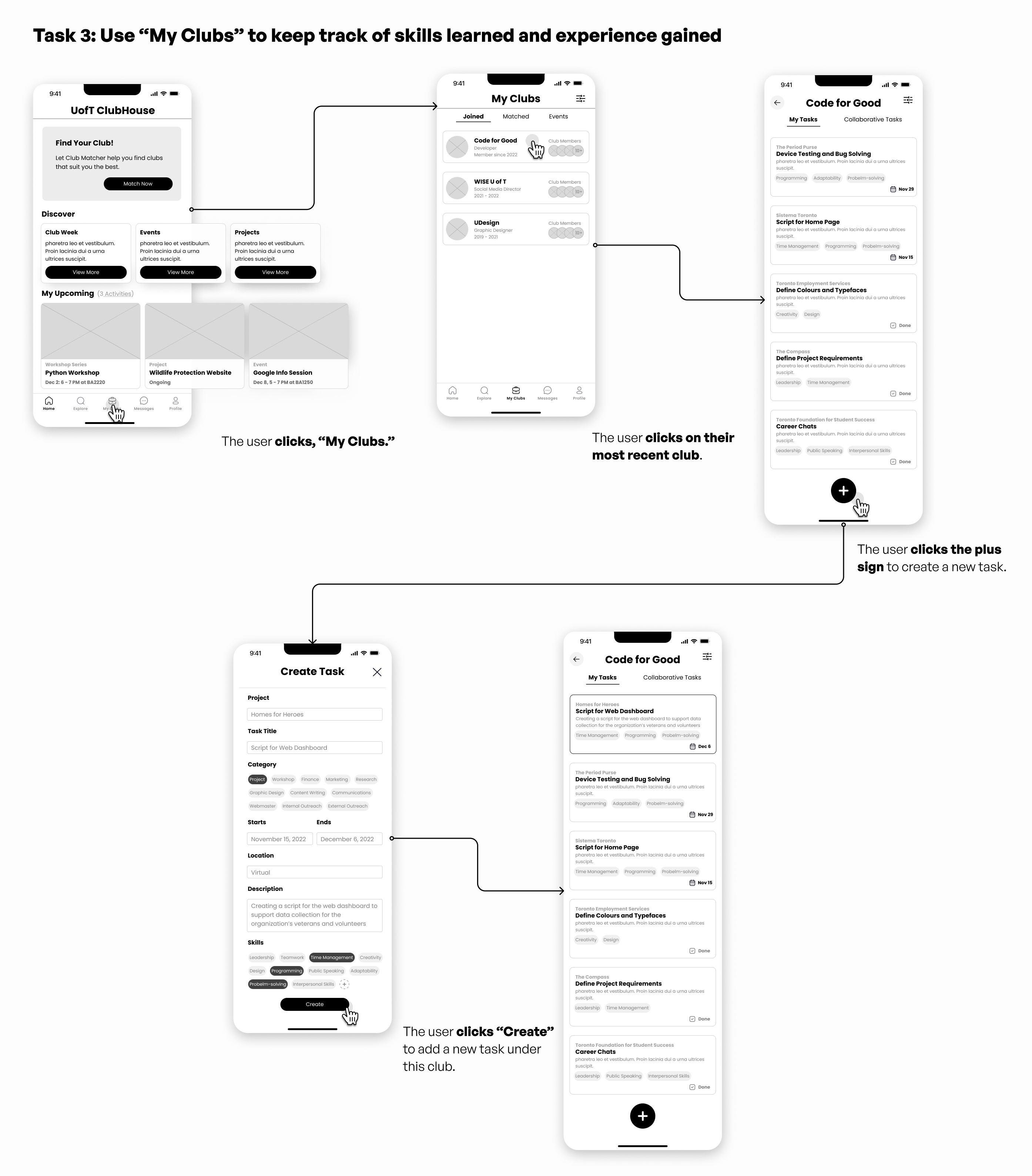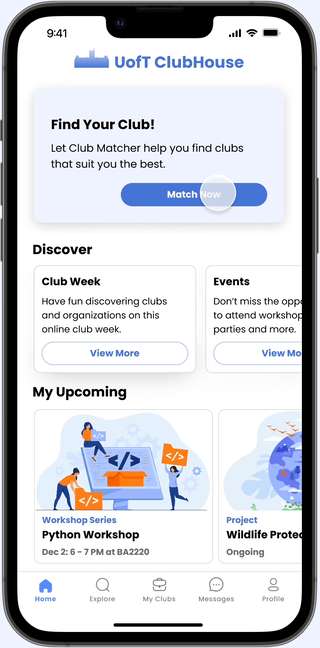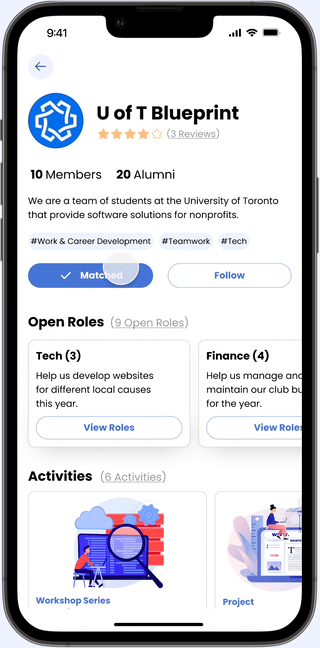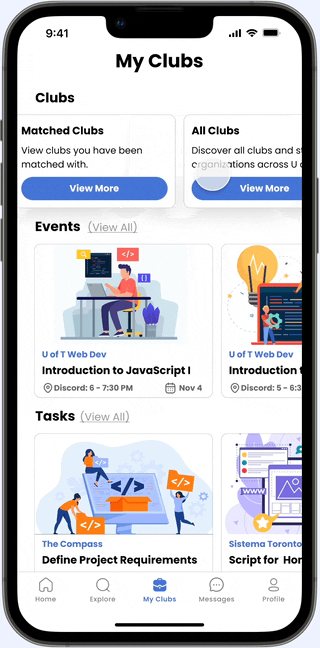Phase 1: Discover
Secondary Research - What do we know about student clubs?
There are over 1,000 clubs and student run organizations across U of T's three campuses.
The goal of our secondary research was to understand the role of clubs in student life. We found that students join clubs to connect to students with similar interests, develop professional skills outside of the classroom, and de-stress from the demands of school.
We found that opportunities for professional development through a co-op or internship program are limited in number and is highly dependent on a students’ program. So students rely on club experience to develop transferrable skills for career readiness.
Primary Research - What are students saying about club involvement?
We wanted to find out more about club experiences at U of T. So, we reached out to students through a questionnaire and conducted semi-structured interviews. Here's what we found...
Out of 36 questionnaire respondents,
11%
are satisfied with their club involvement
50%
have left clubs because it did not match their interests
67%
join clubs with the intention to develop professional skills
We conducted 5 semi-structured interviews with current students that are currently in or have joined clubs in the past. Here's what they have to say about their experience.
“It looks good on applications, whether you're applying for funding, an academic position, or an on-campus job.”
“The barriers were like if you didn't interact with these clubs in the beginning during the registration period you can't join during the year”
We uncovered 5 major themes from our interviews:
